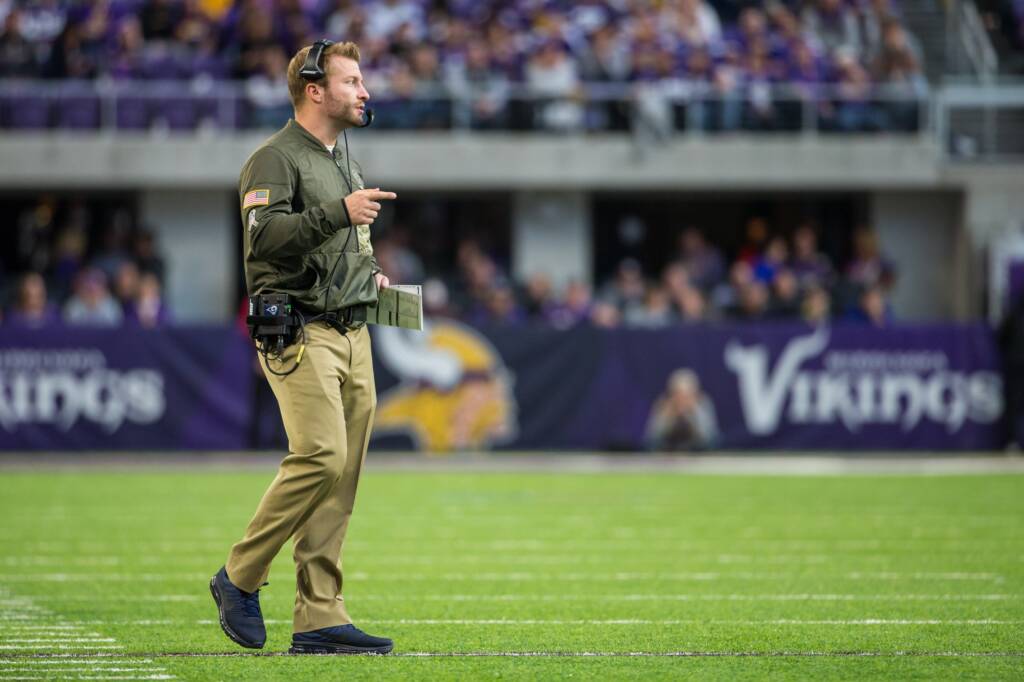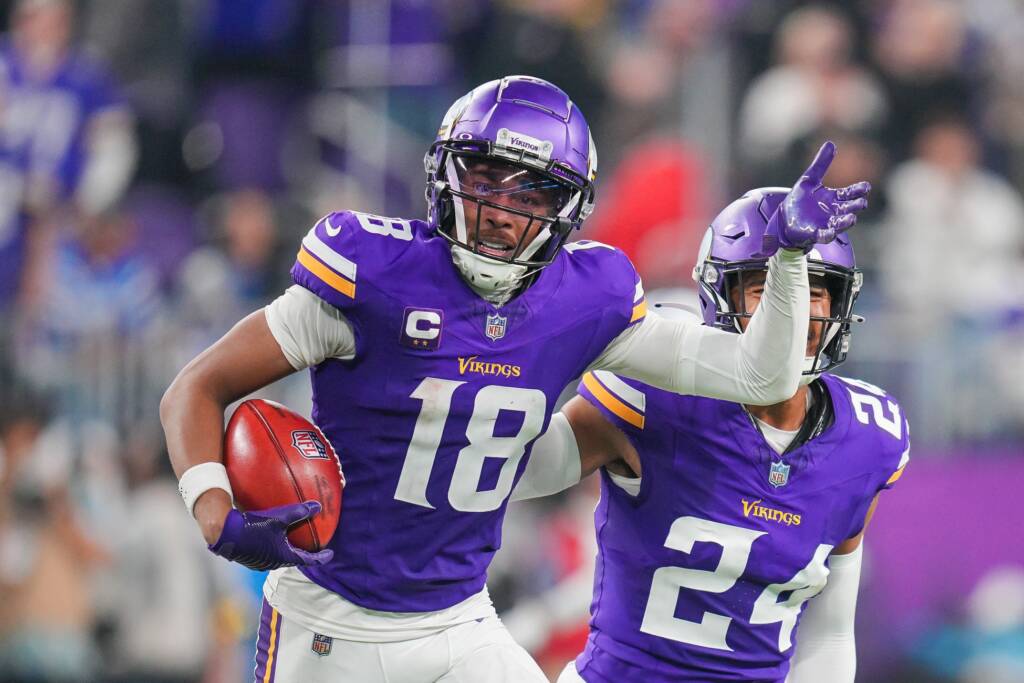As most of you know, Kevin O’Connell won Super Bowl LVI as offensive coordinator for the Los Angeles Rams before taking the Minnesota Vikings’ head coach position in February 2022. After two seasons, O’Connell has followed through on the expectation that he would bring many of the same offensive staples he picked up from Sean McVay during his time in LA. But since O’Connell left the Rams after 2021, there are still some noticeable differences between O’Connell’s offense and McVay’s. Let’s look at four differences between these offenses and whether O’Connell can implement any of them in 2023.
The biggest difference from the Rams offense of 2021 with O’Connell is their newfound commitment to the Pistol formation. By making a slight tweak to the running back’s alignment — directly behind the quarterback in shotgun instead of beside him — the Rams can work with the entire field in the run game while simultaneously giving the running back more freedom and options in pass protection. The latter is critical due to this scheme’s emphasis on generating explosives through the air.
McVay’s reliance on getting into Pistol this season helped revitalize one of the league’s worst running games. Here’s how the Rams’ offense ranked over the previous two seasons in their run game:
2022
- 27th in rushing yards
- 27th in yards per attempt
- 15th in EPA per rush
- 29th in rush success rate
2021 (when they won Super Bowl LVI)
- 25th in rushing yards
- 25th in yards per attempt
- 20th in EPA per rush
- 19th in rush success rate
2023:
- 11th in rushing yards
- 12th in yards per attempt
- 8th in EPA per rush
- 6th in rush success rate
The next difference between the present-day Rams and Vikings has been a longtime staple of McVay’s from the moment he took the Rams job in 2017. McVay places a lot of importance on his receivers as ass-kickers in the run game. Before this season, Cooper Kupp and Robert Woods primarily garnered the headlines as difference-making blockers in the run game out of condensed splits. Puka Nacua set all-time NFL records for receptions and receiving yards in his rookie debut. Still, one of the first comments McVay makes about Nacua on draft day is that he’s someone “that will dig out support in the run game.”
McVay tweaked his starting lineup against the Baltimore Ravens in Week 14, further illustrating McVay’s emphasis on ass-kicking receivers in the run game. Former second-round pick Tutu Atwell stepped up as the WR2 when Kupp was on injured reserve for the first four weeks of the season, averaging nine targets and 74 scrimmage yards per game. But due to his inability to impact the run game with his 5’9″, 165 lbs. frame, McVay made Demarcus Robinson his WR3 for the stretch run of the season.
Electrifying as Jordan Addison is playing Robin to Justin Jefferson‘s Batman, no one is mistaking the 5’11”, 175 lbs. former USC and Pittsburgh receiver as a difference maker in the run game. If O’Connell intends to be the McVay disciple that the Vikings brought him in to be, he might need to put more emphasis on inserting receivers into his 11-personnel scheme who can impact the run game. The opportunity to do so will certainly be there this offseason because K.J. Osborn will be a free agent. Minnesota’s WR3 spot is wide open.
McVay’s commitment to condensed formations was another longtime McVay staple he retained in 2023. During each of McVay’s first four seasons in LA, the Rams led the NFL in condensed formation alignment, with his receivers lining up closer to the ball (as opposed to being out on the numbers) than any other offense. Even though this year’s Rams didn’t lead the NFL in this category, they were a close second to Kyle Shanahan’s San Francisco 49ers.
Prioritizing an offense with a steady diet of league-leading condensed formations allows the receivers to impact the run game while giving them more grass to work with as eligibles. For a Vikings offense that has yet to figure out its run game after two seasons under O’Connell, an even bigger emphasis on condensed formations (with more committed ass-kickers like Kupp, Woods, and Nacua) could be the ticket.
The final differentiator between the Rams and Vikings will assuredly tick off a segment of Skoldiers, so please consider this my apology in advance. But having Matthew Stafford behind the wheel of this Ferrari of an offense is arguably the biggest differentiator between these two offenses. Stafford’s velocity, accuracy, processing, and creativity in and outside the pocket are noticeably better than Kirk Cousins’s. I don’t intend to slight Cousins, who is still one of the better signal-callers in the game today. But Stafford remains one of the more talented and effective quarterbacks of the 21st century.
That leads me to my next question: Was Stafford the driving force behind the “Cooper Kupp role” all along? Let’s not forget that the “Cooper Kupp role” narrative had the Vikings and its fans (myself included) so enamored with the idea of O’Connell inserting Jefferson into this spot once O’Connell took the Vikings job in 2022.
This “Cooper Kupp role” narrative didn’t exist throughout Kupp’s first four seasons under McVay from 2017 to 2020. But that narrative caught fire once Stafford became McVay’s starting quarterback in 2021. Consider Nacua’s record-setting 105 receptions and 1,486 receiving yards in his rookie season; is this fifth-round rookie making such an impact with Jared Goff under center instead of Stafford?
While multiple factors differentiate the Rams and Vikings offenses, going from “good” to “great” at quarterback might just be the answer that unlocks this scheme’s full potential.

